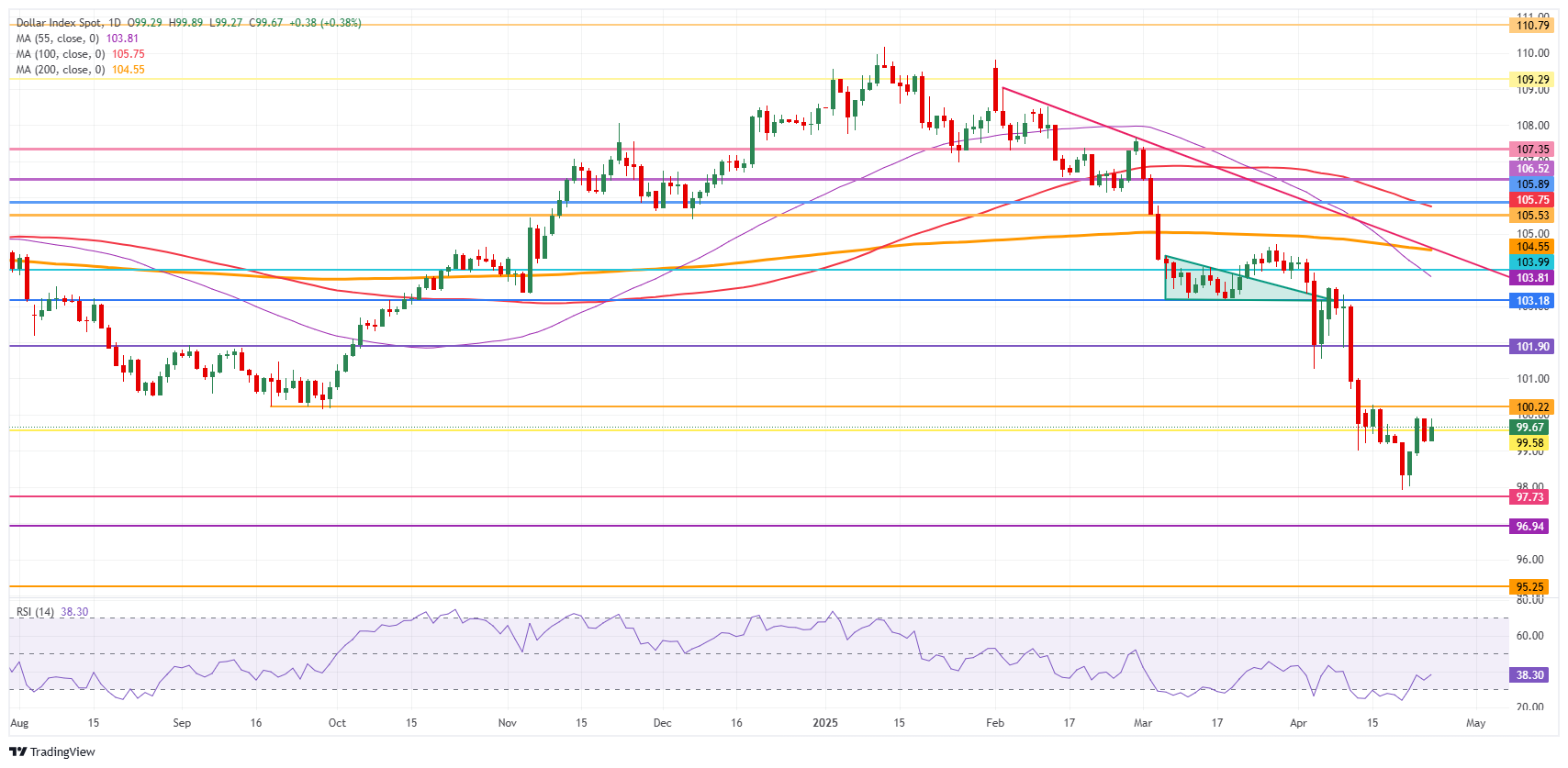US Dollar steady with China-US relations clouds
- The US Dollar edges up slightly on Friday, with traders buying into President Trump’s comments.
- Meanwhile, China came out pushing back against comments as trade talks are underway between the two countries.
- The US Dollar Index remains capped below the 100.00 round level.
The US Dollar Index (DXY), which tracks the performance of the US Dollar (USD) against six major currencies, trades slightly higher and turns positive for the week on Friday. Traders are divided, though, after the US and China left contradictory comments on whether trade deal negotiations are taking place. United States (US) President Donald Trump said on Thursday that the US is talking to China, propping up the equity markets higher, and favoring the Greenback’s return.
Additionally, citing sources familiar with the matter, Bloomberg reported on Friday that China is mulling suspending its 125% tariff on some US imports, including medical equipment, ethane and plane leasing. However, China's Foreign Ministry clarified that “China and the US are not having any consultations or negotiations on tariffs.” When asked about tariff exemptions on some US goods, the Foreign Ministry spokesperson said, “I'm not familiar with specifics, I refer you to competent authorities.”
On the economic calendar front, there is a very light calendar ahead. The Federal Reserve (Fed) has entered its blackout period ahead of its upcoming Federal Open Market Committee (FOMC) meeting on May 7. Meanwhile, this Friday, traders can look at the final April reading for the University of Michigan Consumer Sentiment numbers and inflation expectations.
Daily digest market movers: Headline risks persist
- At 14:00 GMT, the University of Michigan will release its final reading for April.
- The Consumer Sentiment Index is expected to remain unchanged at 50.8 as in the preliminary reading.
- The 5-year Consumer Inflation Expectations are expected to come in at 4.4%.
- Equities are carefully buying into the element that US President Trump might be right that China and the US are talking, while China feels the pain of elevated US import prices into China by local companies. Overall, green numbers with around 0.50% gains across Europe and in US futures.
- The CME FedWatch tool shows the chance of an interest rate cut by the Federal Reserve in May’s meeting stands at 6.1% against a 95.3% probability of no change. The June meeting still has around a 61.4% chance of a rate cut.
- The US 10-year yields trade around 4.29%, looking for direction as markets face some knee-jerk reactions on the Trump comments.
US Dollar Index Technical Analysis: Difficult to look from here
The US Dollar Index (DXY) might look bullish and set to jump higher once headlines emerge of a possible trade deal between China and the US, as rumours are building up now towards that possibility. However, a big downside risk comes with a potential peace deal between Russia and Ukraine, which would boost the Euro (EUR) and weigh on the DXY. So, there are a lot of moving parts that could outweigh the upside or downside for the US Dollar Index.
On the upside, the DXY’s first resistance comes in at 99.58, where a false break occurred Wednesday and Thursday. Should the US Dollar extend recovery, look for 100.22, which supported the DXY in September 2024, with a break back above the 100.00 round level as a bullish signal of their return. A firm recovery would be a return to 101.90.
On the other hand, the 97.73 support could quickly be tested on any substantial bearish headline. Further below, a relatively thin technical support comes in at 96.94, before looking at the lower levels of this new price range. These would be at 95.25 and 94.56, meaning fresh lows not seen since 2022.

US Dollar Index: Daily Chart
US-China Trade War FAQs
Generally speaking, a trade war is an economic conflict between two or more countries due to extreme protectionism on one end. It implies the creation of trade barriers, such as tariffs, which result in counter-barriers, escalating import costs, and hence the cost of living.
An economic conflict between the United States (US) and China began early in 2018, when President Donald Trump set trade barriers on China, claiming unfair commercial practices and intellectual property theft from the Asian giant. China took retaliatory action, imposing tariffs on multiple US goods, such as automobiles and soybeans. Tensions escalated until the two countries signed the US-China Phase One trade deal in January 2020. The agreement required structural reforms and other changes to China’s economic and trade regime and pretended to restore stability and trust between the two nations. However, the Coronavirus pandemic took the focus out of the conflict. Yet, it is worth mentioning that President Joe Biden, who took office after Trump, kept tariffs in place and even added some additional levies.
The return of Donald Trump to the White House as the 47th US President has sparked a fresh wave of tensions between the two countries. During the 2024 election campaign, Trump pledged to impose 60% tariffs on China once he returned to office, which he did on January 20, 2025. With Trump back, the US-China trade war is meant to resume where it was left, with tit-for-tat policies affecting the global economic landscape amid disruptions in global supply chains, resulting in a reduction in spending, particularly investment, and directly feeding into the Consumer Price Index inflation.

